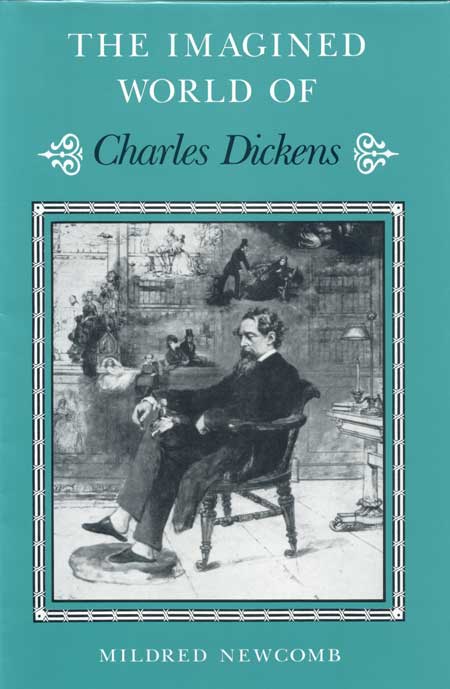| click here to read the full text of this book | leave / read comments and critiques of the book |

The Imagined World of Charles Dickens
Mildred Newcomb
Mildred Newcomb reconciles the contradiction between endless variety and persistent reiteration in Dickens by demonstrating that the fanciful inventions are all variations on a stable set of themes. These themes constitute Dickens’s mode of experience: his way of converting the people, things, and events he encountered into a “totally felt” experience. Combined into a myth or allegory, these felt interpretations in turn became a total belief system.
Professor Newcomb discusses the concept of death-related and life-related images, whose ability to group by analogy or association into pictorial clusters of Gestalts creates pictures with complex interrelationships among their parts. Newcomb explores the marsh/river configurations as death-related images and the significance of the clock/watch and the nature/toy/book configurations as life-related images. She also develops the images of the blighted garden, adults disguised as children, and children suspended in an Edenic enchanted world within these configurations. Finally, she explores the implications of ghosts, graveyards, fire, and trees.
Just as the individual images combine and interweave into unified pictures, so do these pictures combine and interact and merge complexly together to create a dense texture of meaning. In addition, a single image can insinuate an entire picture into an apparently unrelated description. The result is a totally felt interpretation of life without speculation or digression from the author.
Newcomb concludes that the world Dickens imagined is clearly evident from a study of his various images and themes. He tells the story of a nineteenth-century Everyman as he travels from life to death along a road beset with dangers imperiling his soul.
Mildred Newcomb is Professor Emerita of English at Ohio Wesleyan University.
| 1993 375 pp. | This title is no longer available in a traditional print edition. Click here for free access to the book’s full text. |
| Studies in Victorian Life and Literature |

